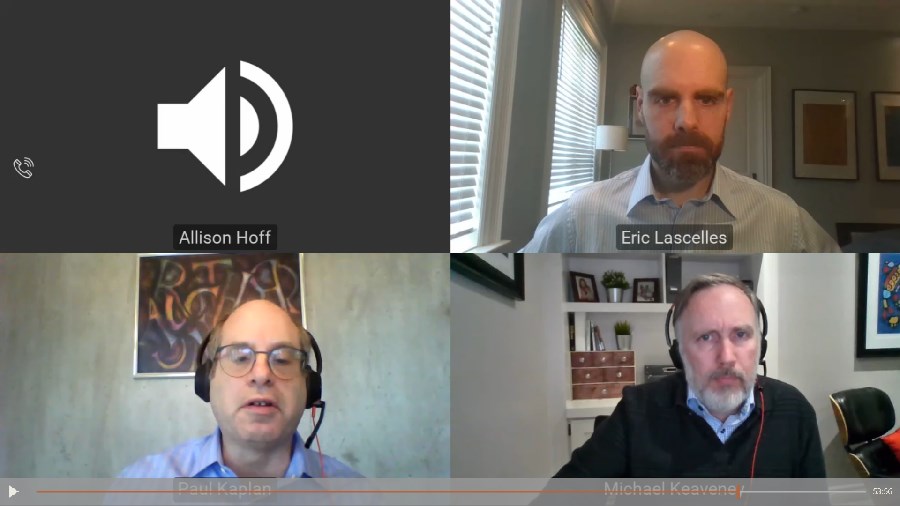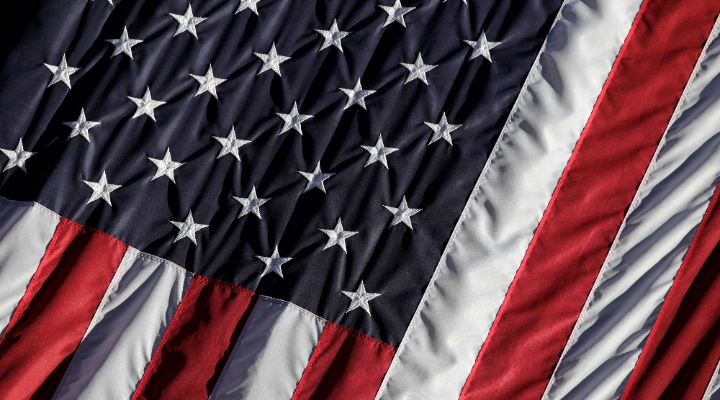
Editor's note: Read the latest on how the coronavirus is rattling the markets and what you can do to navigate it.
If we reopen the economy without a vaccine and without herd immunity, will COVID-19 return? And will we then go back into lockdown? Is an economic downturn worse than the virus? These were some of the main concerns on the minds of panellists at Morningstar’s latest Executive Forum – the second of 2020 – titled “Is this time different?”
The Forum, which for the first time, was held virtually, was aimed at answering questions like why this market correction is different than what we’ve seen in the past, whether the impact of central bank policy and recent moves by central bankers will provide enough of a lifeline to support economic activity, and what investors should do right now.
The panellists were Eric Lascelles, Chief Economist at RBC Global Asset Management, Laurence B. Siegel, Director of Research, CFA Institute Research Foundation, and Paul Kaplan, Director of Research, Morningstar Canada. The Panel was moderated by Michael Keaveney, Head of Investment Management at Morningstar Associates.
Closest historical parallel?
The Forum opened with the panellist being asked for the closest historical parallels to the current Pandemic. All three panellists agreed that we are in unprecedented times. Lascelles and Kaplan suggested the Spanish Flu of 1918 is the closest comparable, while Siegel considered similarities to the U.S. Civil War.
“To be honest, nothing looks like this. This period is unique in modern history, and we lack a roadmap. The Spanish Flu looks like this, but it doesn’t show up in the economic and financial data of the time,” Lascelles said. Kaplan pointed out that every crisis is unique in some way, but the closest comparable is the Spanish Flu, “Except that fatality rates were much higher. Though the Flu was accompanied by a market decline, you can’t disentangle it from a concurrent major event, the first World War.”
Siegel agreed with the ‘unprecedented’ nature of our current times, saying, “Something like this has never been tried before, and hopefully it will never happen again.” He talked of how around half of the U.S. male population had been killed or disabled during the U.S. Civil War, but even with that level of fatality, the event was not accompanied by a 34% market decline. “This has led to a revaluation of economics,” he pointed out, adding that the bottom 25-50% of the population is most impacted.
But was this impact exacerbated by the non-stop media coverage?
Negative news and apocalyptic thoughts
The audience agreed, with 87% saying that the media coverage of the pandemic has harmed investors. Siegel agreed but added that the reasons were understandable.
“Investors are biased to negative news, and this news impacts them personally. It is troublesome that there isn’t balanced coverage, but it is understandable. As long as everything is going well, no one wants to hear about that. When change comes, it’s usually for the worse. Change for the better happens slowly, over many years.”
He pointed out that there is some good news in the pandemic. The fatality rates are lower than the Spanish Flu, for instance. But the economic news is dreadful.
“It’s like governments have taken a machine apart, and now want to fix it. It will take a lot of capital. But it can be done, and it is key to remember that this is not a permanent catastrophe, just a temporary one.”
And because it is temporary, the apocalyptic thinking around the pandemic is completely unjustified, to Siegel.
“Since the beginning, there has been apocalyptic thinking. Every religion has the concept of an end time. But this current apocalyptic thinking is not in the context of religion. There is a belief that there will be pollution, global warming, global cooling and then we will all die. But it’s wrong. It is not backed by science. Even after this pandemic, 99.8% of us will still be alive. That’s not an apocalypse,” he says.
He also pointed out that the effects of the lockdown are not linear.
“If we have a 2-week lockdown, it’s like a vacation, and there are enough charitable ventures in the world to cover the shortfalls of two weeks. If it stretches to two months, the lockdown will be destructive, but still not so bad, there are ways we can cope. However, if it stretches to two years, a lockdown will revert us to the dark ages. Food supplies, power supplies, will all be threatened, and we will go back to the dark ages,” Siegel says.
Maybe in two years, we could revisit thoughts about an apocalypse. For now, though, Canadian investors care about housing.
The reality of realty
Eric Lascelles is sympathetic to the idea that there could be a short-term correction, after all, home sales are down 60%, and housing starts are OK, but not the best.
“On the one hand, interest rates are low, which is a good sign for mortgages. On the other hand, worryingly, is the rather large unemployment problem. Interestingly, though, we haven’t seen household incomes decline as much, because government initiatives like CERB are filling the gap. But it’s unlikely that you’ll be able to get a mortgage without an income, irrespective of whether you’re getting supplements from the government,” he says.
He also points out that in the near term the demand from immigration is guaranteed to dry up, but from a long-term standpoint, things will improve.
“I agree with the audience that this is a multi-year journey back to normal. But in the long term, I think the housing market will be strong. In the short term, I wouldn’t be surprised with a decline,” Lascelles said, referring to an audience poll where 60% of the audience believed that it would take between 12-24 months for the S&P/TSX Composite to get back to pre-March 2020 peaks.
And speaking of the audience, a question came in, asking that with government stimulus, easing, and benefits, does risk even exist anymore?
Does risk exist anymore?
Lascelles admitted that thanks to government support, risk assets like equities did not fall as much.
“However, the support was not so much to reward risky behaviour among investors, as much as to provide adequate liquidity to businesses to not fail. It did have the side effect of helping investors in riskier assets maybe not make money, but certainly not lose as much,” he said.
Siegel countered by saying that it is perhaps the riskiest strategy of them all to assume that the governments and central banks would keep stimulating the economy.
“If investors expect risk mitigation to continue, they would take on ever-increasing amounts of risk, believing themselves to be underwritten by a giant insurer. That would eventually lead to a massive fall, like the financial crisis,” Siegel warned.
Overall, Lascelles expects the public debt levels to balloon to 20% of GDP, which is manageable for some countries, and not so manageable for others, like Greece and Italy. “On the flip side, interest rates are low, so the cost of servicing the debt is minimal. But even then, these measures are temporary, and no one seems to be talking about a plan to increased revenue generation,” he said.
Specifically, when it comes to Canada, while the Bank of Canada has taken some significant steps in the direction of quantitative easing and the buying of bonds, Lascelles does not believe that either Stephen Poloz or his successor Tiff Macklem will go to negative interest rates, but will keep the interest rates low to help the economy.
But what shape will the recovery take?
Swoosh
Lascelles points out that recoveries are rarely symmetrical, and never as fast as the fall. Though this current recovery was much quicker than other corrections and declines, compared to the speed of the fall, the recovery will be slower. So from that point of view, rather than a U-shape, or a V-shape, or an L-shape recovery, it is likely we could see a ‘Swoosh’ recovery, like the Nike sign, Lascelles feels.
Canada, though will be worse off than the U.S., mainly because the sectors that were harder hit – materials, energy – form the backbone of the Canadian economy, while the technology sector, where most of the gains came from, is rather small.
“Add to that the higher levels of debt in Canada, and we have a situation where we are somewhat worse off in Canada than the U.S., unless of course, there is a double-dip situation in the U.S.,” Lascelles says.
What should you do?
All three panellists suggested doing nothing, especially if you’re thinking from a place of panic.
Siegel suggests that as investors, if you have so much in equity that you’re having a panic attack from 34% decline, then own less equities, because, “This will happen again. Maybe not in the next 10-years, but eventually the market will once again decline. The last decline was 57%! And if you’re comfortable with this decline, then my advice is to do nothing.”
Kaplan also spoke of the importance of staying the course. “The main problem that investors face is panicking and acting emotionally and selling equities. Investors will regret it later if they don’t stay the course, so for now, do nothing,” he says.
Finally, Lascelles points out that this is not the time for radical changes. However, he does see some opportunities. “When I look at the risk premiums between stocks and bonds, the gap is unusually large, maybe not as large as a month and a half ago, but still large, and this suggests to me that over the long run, from here, stocks will beat bonds.”




















